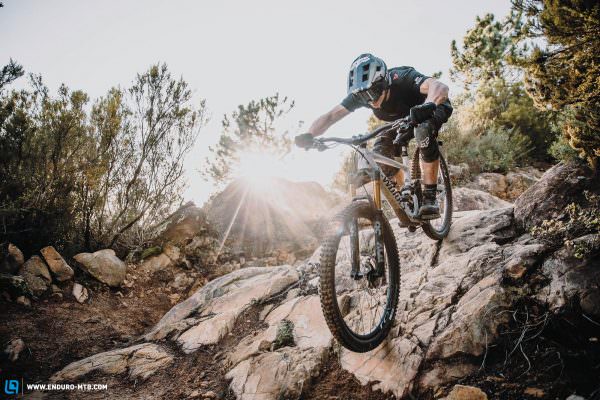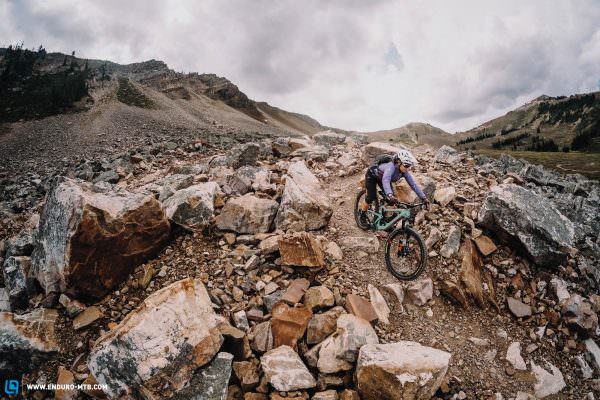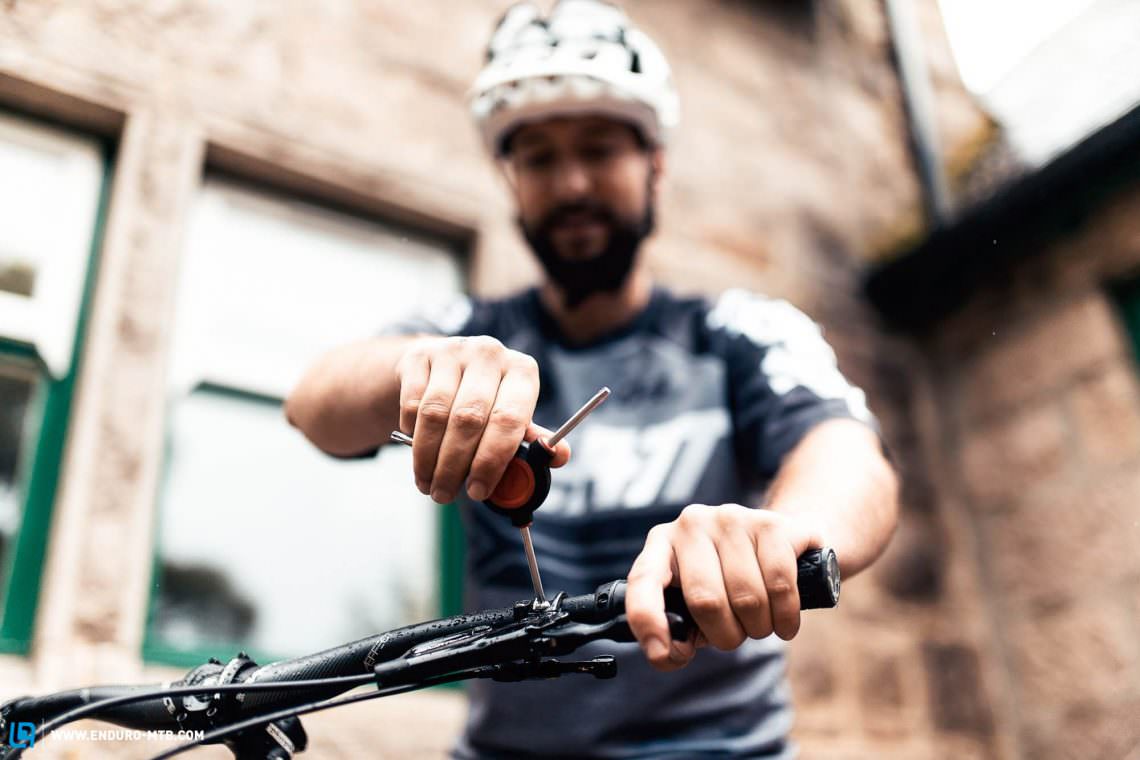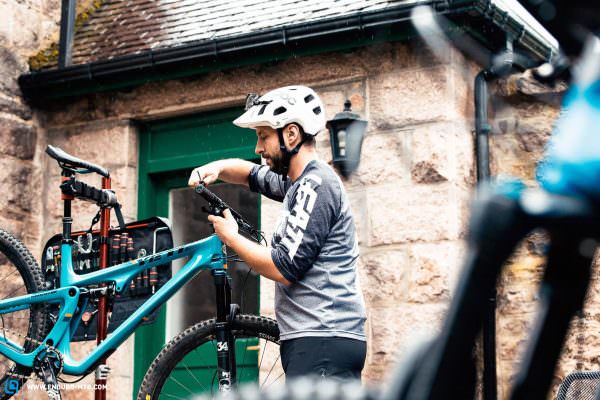We’ve all been there: you’re pinning it down your favourite descent, feeling good and riding with intent. Two minutes later your forearms and hands start to burn, getting worse and worse until, three minutes into the trail, you can barely hold on to the bars. But what exactly is this ride-ruining pain and how can you avoid it? We took it upon ourselves to find out everything there is to know about the dreaded arm pump.

What is arm pump, and how can it hurt so much? That’s the question many disgruntled riders will ask themselves three minutes into a six-minute descent when they simply can’t hold on to their bars any longer. Arm pump is probably the most common injury in our sport, though as its causes are often misunderstood, it is treated with almost mythological fear by many riders. We spoke to Kirsty Sinclair (clinician and owner at Tweed Valley Physiotherapy) to find out what arm pump is, what causes it and how to avoid it.
What is arm pump, what are the symptoms and why do we get it?
„Arm pump“
The term that is used to describe symptoms in the forearm following a period of intense downhill riding.
“Arm pump still isn’t fully understood in the medical world,” Kirsty explains to us. “However, it is thought to occur as a result of an increase in pressure in the forearm region having an impact on blood flow.” She continues. “In downhill and enduro riding there can be periods when there is little chance for relaxation of the forearm muscles to allow for a pressure drop. The anatomy of the forearm also makes the situation tricky. The muscles are encased in a strong connective tissue called fascia which has very little elasticity to allow for the volume of the forearm muscles to expand with rapid intense activity.”


In short, the intense stresses and impacts felt while riding downhill lead to swelling of the forearm muscles, in turn, restricting blood flow. This leads to a variety of symptoms.
“Typical symptoms are pain, a feeling of tightness/hardness in the forearms, cramping, swelling, loss of sensation, weakness and loss of control of the hand. The symptoms are brought on by the activity but are relieved by rest. Such symptoms of arm pump, if they are persistent, can develop into what is clinically termed Chronic Exertional Compartment Syndrome (CECS).”
What can you do to avoid arm pump?
Now that we know what arm pump is and what causes it, we can explore possible ways of avoiding it. While evidence-backed information is limited, there are a number of sensible principles that can be applied if a rider is suffering from symptoms, Kirsty explains.
Are you riding too much, too soon?

If you are attempting rides of duration or intensity that you’re not used to, you will likely suffer from arm pump. This is because the body needs time to adapt to changes in your riding habits. For example, if your body is only used to riding the short, flowy trails on your local hill, it will protest when suddenly exposed to a week-long holiday of bike park laps. Kirsty stresses the importance of giving your body time to adapt and recover, gradually building intensity rather than jumping straight in at the deep end.
Is your upper body strong enough?

Building more upper body and grip strength could help ensure you are able to tolerate the stresses of riding tough trails at speed. Kirsty recommends cross-training for best results. Bouldering is a sure-fire way of boosting your upper body strength, simultaneously working out your back, arms and shoulders while also massively strengthening your fingers and improving your grip strength. Time in the gym and even a simple home workout programme could prove to be beneficial.
Basic bike setup may be the issue
Your bike’s set up can have an impact on your ability to deal with and avoid arm pump. While there are no set rules here, adjusting the following details to suit you and your preferences will give you a better chance of avoiding arm pump.
- Brake lever angle – The angle of your brake levers can have a big impact on the stresses put through your hands and forearms when riding. While it ultimately comes down to personal preference, many riders prefer running their levers quite flat (horizontal) when riding steep trails.
- Brake setup – The more force you need to use your brakes, the more pressure builds up in your forearms. Setting up your brake levers to sit quite close to the bar avoids you having to stretch to reach them and means you can brake harder with less effort. Of course, you have to make sure the brake bites well and is bled correctly. A great way to boost the power of your brakes is to go up a rotor size, or, if your bike is drastically under braked, invest in some new stoppers. Find out more ways to get the most out of your brakes here.
- Grip size – Again, this one comes down to personal preference. However, if you have small hands and are struggling with arm pump you may be better off with some thin and soft grips. Likewise, if you have big hands the grips that came on your bike may be too thin. We recommend trying out a few different options and paying attention to the feel, durometer and thickness of the rubber used on each.



Minimise vibrations – get your bike dialled
The vibrations associated with riding rough descents play a big part in over-stressing the forearms. Therefore, a top tip for avoiding arm pump is to make sure that your bike is dialled and ready to absorb vibrations and impacts as best as possible. We recommend spending some time perfecting your suspension set up and tire pressure, which will help smooth out the trail and absorb vibrations before they reach your hands.

If you want to go all-out, there are a number of products on the market that claim to take vibration damping to the next level. Here are our favourites:
- RevGrips – Bringing motocross technology to the MTB world, RevGrips Pro series grips do a great job of absorbing handlebar buzz, keeping your hands feeling fresher for longer and alleviating the stresses placed on your forearms. Check out our review here.
- Spank Spike 35 Vibrocore handlebar – Spank’s Vibrocore foam-filled handlebars do a great job of adding an extra dose of compliance and damping to your ride. Check out our review here.
- CushCore tire insert – CushCore’s tire insert is a great option that both absorbs impacts, and lets you run lower tire pressures for even more comfort.



Your technique may be your downfall

As much as we hate to admit it, many of us could improve aspects of our riding technique. Here are a few pointers to get you started:
- Heels down, head up – Light hands, heavy feet… Dropping your heels and driving weight through the pedals will help to take unnecessary pressure off your hands. A top tip!
- Brake sparingly – Dragging your brakes only puts more stress on our forearm muscles. Try to relax and brake with purpose when needed.
- Relax your hands – Use smooth sections of trail as an opportunity to relax your grip slightly. This will help to alleviate the stresses on your hands and forearms.
- Body position – Make sure your body position is on point. A dialled riding position will ensure your weight is properly balanced over the bike.
Arm pump is a (literal) pain that all of us will experience at some stage during our time riding mountain bikes. However, with the right knowledge, it doesn’t have to be a ride-ender. Take time to strengthen your body, dial in your bike and perfect your technique, and you will be doing everything you can to avoid the dreaded condition. However, if symptoms do persist, be sure to seek the advice of a sports physiotherapist like Kirsty or a doctor.
Did you enjoy this article? If so, we would be stoked if you decide to support us with a monthly contribution. By becoming a supporter of ENDURO, you will help secure a sustainable future for high-quality mountain bike journalism. Click here to learn more.
Words: Photos: ENDURO Team









